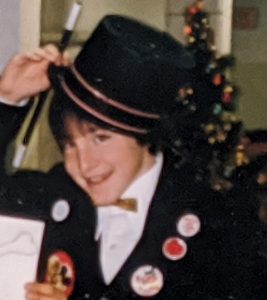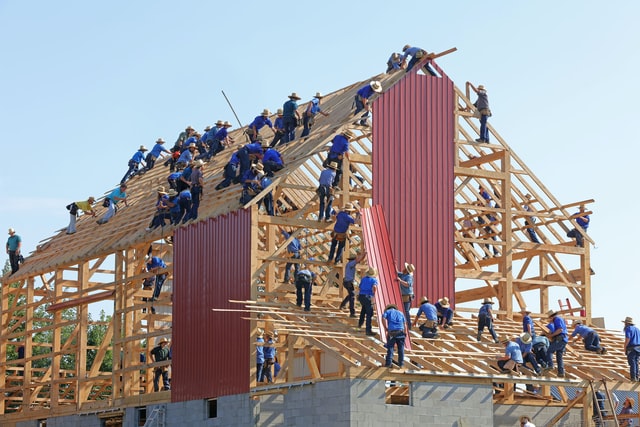
by choij | Jul 28, 2020 | Innovation Coaching
The Innovator’s Vitamin C is essential for any Innovator who is looking to create change and disrupt the status quo. Having ample stores of creativity, curiosity, and courage not only encourages innovation, but also buffers and boosts Innovators during difficult times.
– – –
Ah, summertime. The season of sunny skies, warm temperatures, and for fellow ocean lovers, the regular pilgrimage to the coastline to fill up on much-needed Vitamin “Sea”.
Although mountain and countryside enthusiasts may not understand, plunging oneself into the cool saltwater is a literal refresh that provides invigoration and renewed energy. Experiencing the moon’s gravitational pull via the changing tides reminds us that there are unseen forces larger than us, which invites a valuable shift in perspective. Science has even shown that when humans look out at the ocean, this activates our “blue mind” and triggers a calming effect. Ask any ocean lover, and they will tell you how critical this Vitamin Sea is for their wellbeing.
Of course, Vitamin Sea is a play off of the term Vitamin “C,” which is an essential nutrient for human health. Without Vitamin C, our bodies weaken, our limbs degrade, and our smiles worsen. In extreme cases, a lack of Vitamin C can even become fatal (remember all those 18th century sailors who suffered from scurvy?).
But this is a blog about innovation, so let’s get to the point: Vitamin Sea is not the only metaphorical Vitamin C that’s out there… Have you heard of the Innovator’s Vitamin “C”?
The Innovator’s Vitamin C is comprised of three essential characteristics:
- Creativity
- Curiosity
- Courage
Creativity is our ability to produce or use original ideas[i].
Given that Team Toolkit’s straightforward definition of Innovation is “novelty with impact” and that “novelty” means something new or original, then the ability to create or use something original is a must for an Innovator. Creativity is a critical prerequisite for innovation.
Curiosity is an eager wish to learn or know something[ii].
When we are eager to learn about the world around us, we start paying attention. This attention leads us to observations and problem-spotting. We’ll also start seeing opportunities for something new to be created or for something to be used in a different way. These scenarios are the gateways to innovation, and curiosity compels us to keep going, to keep digging deeper until the learner in us is satisfied.
Curiosity is also a powerful tool for shifting our mindsets. When situations do not go as we expect or our new effort fails, we can use curiosity to shift from a negative, blaming mindset into a more constructive, learner’s mindset. Rather than investigating “Who did wrong?” and fault-finding, curiosity prompts us to ask, “How might we have done this differently?” so that we can learn from our mistakes and improve for next time.
Courage is the ability to control your fear in a difficult situation[iii].
Bringing forth an innovation inherently requires change since it introduces novelty. However, humans are biologically predisposed to resist change which means that when we’re introducing our innovative idea or solution for the first time, our audience’s default mode isn’t exactly to embrace it.
This is where calling upon our courage becomes critical, and courage is what differentiates the innovators from the armchair dreamers. Innovators are aware of their fear, but they’re not halted by it. Instead, we tap into our courage to persevere and bring forth the change we want to see in the world.
Creativity, curiosity, and courage are a must for innovators.
Our bodies cannot naturally produce Vitamin C, so we must consume it via external means such as pineapples, oranges, and other citrus fruits. Similar to true Vitamin C, the Innovator’s Vitamin C may not be something we naturally produce or have abundant stores of.
Fortunately, there are many practices and exercises that can help us cultivate these characteristics of creativity, curiosity, and courage (stay tuned for more blog articles on this!). By creating a daily practice of “taking” our Innovator’s Vitamin C and regularly practicing these exercises, eventually these characteristics will become habitual and our default attitudes.
Creativity, curiosity, and courage are a must for innovators, so set yourself up for innovation success and take your daily Innovator’s Vitamin C!
[i] https://dictionary.cambridge.org/us/dictionary/english/creativity
[ii] https://dictionary.cambridge.org/us/dictionary/english/curiosity
[iii] https://dictionary.cambridge.org/us/dictionary/english/courage
by dbward | Jul 20, 2020 | Keeping up with the team, Misc Awesomeness
 My career as a stage magician began when I was rather young – the photo that accompanies this post is me – The Great Houdani – at age 12, dressed up in my tux and ready to perform one of my first paying gigs at an office Christmas party. All through high school and college I did the birthday party circuit, performed at libraries, hospitals, street festivals, and an occasional breakfast-with-Santa-at-the-mall. I loved being on stage, the money was pretty good, and it was a lot of fun.
My career as a stage magician began when I was rather young – the photo that accompanies this post is me – The Great Houdani – at age 12, dressed up in my tux and ready to perform one of my first paying gigs at an office Christmas party. All through high school and college I did the birthday party circuit, performed at libraries, hospitals, street festivals, and an occasional breakfast-with-Santa-at-the-mall. I loved being on stage, the money was pretty good, and it was a lot of fun.
I mention all that because sometimes innovation seems like magic. When new technologies or products suddenly appear, when old organizations transform into something new, it’s tempting to come up with mystical explanations. We mistake the inventors, leaders, and change-makers for wizards with access to otherworldly powers, and we speculate about what sort of magic words or gestures they employed to produce such amazing results.
Like stage magic, the reality of innovation is inevitably quite ordinary. Nothing supernatural is actually going on. Instead, we spectators simply did not see what happened behind the curtain and are unaware of all the pre-show setup that made the supposed miracles possible. Sitting in the audience, we fail to notice the hidden slight-of-hand maneuvers. We have no idea how many months of patient practice were necessary to make the performance appear effortless and natural.
Yes, innovative people genuinely do things differently than their status-quo-oriented counterparts. However, neither magicians nor innovators are suspending the laws of physics, nor are they literally doing the impossible. They’re just doing something different. And that’s good news, because it means we can all follow their example and bring a little magic and innovation to our work.
It turns out good innovators and good magicians have a lot in common. For starters, both groups emphasize creativity and imagination. They put in the effort to develop their creativity and bring imagination to bear on their craft. One way we can develop our own creativity is to ask good questions.
When David Copperfield made the Statue of Liberty disappear in 1983, he did not begin with the solution in mind. Instead, he started by asking himself what sort of illusion could not be done. He knew full well that performers make small things disappear inside theaters all the time, but making a national monument disappear in an outdoors setting would be truly impossible. Now that he had an idea of a trick that could not be done, he began the work of figuring out how to do it.
Next, magic and innovation both require a dedication to learning. Practitioners of both arts need to read a lot and spend time with mentors, coaches, and collaborators who can teach them new tricks. As a kid, I read dozens of books about magic and performing. I joined the Society of American Magicians and read their magazine cover-to-cover every month. I was fortunate to find a mentor in Roger Way, aka Skipper The Clown, whose coaching about magic and showmanship made a huge difference in my shows.
As we study, it’s important to make sure our learning includes practical skills as well as academic information. A magician who knows all the technical terms for slight-of-hand moves but has not physically mastered them is like an innovator who can speak at great length about the difference between disruptive innovation and sustaining innovation, even though they have neither disrupted nor sustained anything. So by all means, read books and listen to TED talks. But then set up a mirror and practice that coin trick over and over until you can even fool yourself.
Next, both disciplines require collaboration and people skills. The best performers and innovators tend to have strong relationships with long-term partners. Think Penn and Teller, or Jobs and Wozniak. Once again, this is something everyone can do. We can all take steps to build a diverse and inclusive network, reaching out to people and putting in the time needed to build strong teams.
Bear in mind that good partnerships go beyond the stage itself and extend into the audience. Plenty of magicians are technically competent but have no stage presence and end up boring or alienating their spectators. Similarly, all too many technologist fail to communicate effectively, which greatly limits the impact of their work.
Finally, magic and innovation both require a willingness to experiment and to take risks. Sometimes the risk is physical, like the time I almost drowned myself on stage doing a water escape (spoiler alert – I escaped and survived). Other times the risk is less severe, like every time I do a card trick and hope the audience doesn’t notice the secret move I’m doing right beneath their nose.
Similarly, every innovator must dedicate time and resources to performing experiments with unpredictable outcomes. The key is to start small and do an incremental series of iterative tests, gaining experience and confidence over time.
It’s been years since I picked up a magic wand, but the lessons I learned as a performer continue to influence my work today. I still read deeply, practice constantly, ask questions, build partnerships, and do experiments. And the good news is, no matter what kind of work you do, these behaviors can help bring a little magic to your day too.
by dbward | Jul 17, 2020 | Uncategorized
 We all used to have in-person meetings for collaboration and ideation activities. Then COVID-19 hit. And quarantine. And we all scrambled to maintain collaborations across stakeholders despite the inability to continue in the usual ways. And as you no doubt have noticed, there are critical differences between planning and executing a successful virtual collaboration and the traditional in-person events. It’s not as easy as just doing the same old stuff, but this time on video. We have to make a whole bunch of other changes, and they aren’t easy or obvious. That’s precisely where we’d like to help.
We all used to have in-person meetings for collaboration and ideation activities. Then COVID-19 hit. And quarantine. And we all scrambled to maintain collaborations across stakeholders despite the inability to continue in the usual ways. And as you no doubt have noticed, there are critical differences between planning and executing a successful virtual collaboration and the traditional in-person events. It’s not as easy as just doing the same old stuff, but this time on video. We have to make a whole bunch of other changes, and they aren’t easy or obvious. That’s precisely where we’d like to help.
For a little background, check out Virtual Experimental Conference Delivers Real-World Results. That article basically describes an experiment we did, where a “coalition of the willing” from across MITRE’s Acquisition Disruptors (aka, the MAD Team) and the MITRE Innovation Toolkit (ITK) came together to respond to the unfortunate cancellations of the innovation collaboration events, pivoting from physical events into on-line events. We have planned and executed several events since that fateful day.
As we began reflecting on the experiences over the past few months, we took time to examine the virtual collaboration problem, which resulted in the following problem statement:
How might we create ways to continue collaborating with our Sponsors across multiple levels of classification while considering restrictions on physical proximity and the lack of accepted virtual environment norms/protocols as we aim to effectively solve problems to create a safer world?
With the help of MITRE’s Kaylee White as our lead facilitator, we ideated (ie, brainstormed) the key attributes associated with the virtual collaboration problem statement using our personal experiences and the Lotus Blossom tool from ITK. When Kaylee showed us the final product, we realized, “Hey! This is the beginning of a checklist to enable effective planning and executing of virtual collaboration events!”
And so, the “It’s Not a Checklist” Checklist was born. While it is far from a complete set of activities and considerations needed to deliver a successful virtual collaboration, it’s a pretty good starting point. We have shared the information with MITRE teammates, and received very positive feedback. So, we would like to take the sharing a step further and offer the information here for your use. The presentation is approved for release – so feel free to share away!
Are you using the Not a Checklist? Did it help? Did we miss any key items? We welcome your feedback! Please share your experiences and ideas. Thank you!

by rgregorio | Jul 13, 2020 | Tools 101, Tutorials
Persona is a tool we use to describe a semi-fictional ideal customer or user of your product or service. The tool lives under “Understand User” category and serves as a vital way to understand or empathize with their perspective, opinion, or point of view.
Personas help a project team understand their users’ needs, motivations, limitations, and capabilities, acting as a focal point and reminder throughout the project, ensuring the final product is something a human being would actually need or want. Personas accelerate the process of developing and validating solutions, are a useful component of thought-experiments, and help increase the clarity and realism of the project team’s pitches and presentations.
Envisioning a persona can be challenging, especially when starting with a blank sheet of paper. What do they like? What do they do? What are their responsibilities? What are their values? Ideally, you want your personas to be built off existing user research to help answer these questions. But what if you don’t have existing users? Sometimes it’s easier and more impactful to start by outlining an anti-persona – or PersNOna – that you want to target. Identifying what falls out of scope can be just as important as identifying what falls into scope. Using reverse thinking, this exercise clarifies, refines, and builds consensus among your team.
We’re no strangers to reverse thinking or brainstorming here at Innovation Toolkit. If you’re familiar with our Premortem tool, you know that through defining failure, we inversely define success. Sometimes it’s easier to think negatively about all the things that could go wrong and where we may misstep, than what we actually need to do to succeed.
Oftentimes, thinking about the reverse can be freeing and allow ideas to flow more openly than solution-oriented brainstorming, removing the pressure to be “right” and encouraging failure. Once you’ve brainstormed all of the ideas for failure, you reverse them into solutions. Reverse brainstorming is a good technique when it is difficult to identify solutions to the problem directly. It could be used in standard solution brainstorming, too (challenge: fill out a Lotus Blossom with anti-ideas!).
You may want to create a PersNOna for several reasons:
- You think everyone could be a target user / your persona is too broad
- You don’t know where to start with a persona
- You feel strongly about the qualities that would NOT fit your target user/customer
- You want to work by process of elimination
Sometimes it’s easier to start with the “definitely nots” than the “definitely’s.” That was the case when we were discussing adding new members to Team Toolkit. We couldn’t quite put our finger on the qualities of someone we would want to join the team, but it was much easier to write down what we did NOT want. Some examples of the “thanks, but no thanks” category were ego driven, fixed mindset, did not want to collaborate or learn, and traditional/set in their ways. The team got passionate about this discussion, especially because we all agreed we wanted to maintain the cultural attributes of the team when adding training new folks.
Have you put off creating a persona or solving a problem because landing on the “right” solution felt too daunting? We encourage you to try flipping the script and flexing your reverse thinking muscles to define the “nope’s” before getting to the, “Yup, that’s it!” We all deserve to be off the hook for thinking of the “right” thing every now and then, we can finally get to a truly innovative solution – something different that makes a difference.

by dbward | Jul 6, 2020 | Tutorials
NOTE: This post originally appeared as a LinkedIn article.
These days we’re all increasingly aware of significant problems that need to be addressed, whether it’s the pandemic or systematic racism or climate change. Naturally, we’d all like to do our part and lend a hand, but it’s not always clear how to start. Here are five questions you may want to ask as you look for ways to be helpful and make a difference.
1) What is already being done in this area?
Before launching a new effort, take some time to educate yourself about what activities are already under way. Get to know the organizations and people working in that space, understand their efforts, priorities, and activities. This way you avoid reinventing the wheel, operating at cross purposes with like-minded people, or inadvertently undermining work that others are doing. Plus, if someone else is making progress, you may be able to work together and make a difference sooner than if you were starting from scratch.
For example, several of my colleagues and I were planning to attend South By Southwest this year. When the conference got cancelled because of the pandemic, the first thing we did was look for something to do instead. Specifically, we asked the question “Is anyone putting together a list of online talks and workshops, or maybe some local in-person events, now that nobody is going to SXSW?” We hoped the answer would be yes, but after several days of research and outreach, we were unable to find any such effort, so we started to think about doing something ourselves. This led to the next question.
2) Would it be helpful if we did __________?
If you’ve got an idea for something you think would be helpful, it’s wise to check with the people around you to see if they also think it would be helpful. A posture of curiosity, humility, and generosity will go a long way in building a coalition to actually do the thing, as well as ensuring that good intentions produce good results. Framing the idea in the form of a specific question – and being open to a variety of answers – is a much more inclusive message than simply saying “I’m going to do this.”
To continue the example, our specific question was along the lines of “Would it be helpful if we posted a lightly curated list of links to online talks about innovation and creativity?” We weren’t committing to doing anything just yet, and we weren’t suggesting we could recreate the whole conference experience (or even a meaningful slice of the experience). In fact, it wasn’t even about SXSW anymore. Instead, we described a modest idea that we thought might bring people together to share some ideas, and asked if that sounded helpful.
The response was overwhelmingly positive. More than 70 people immediately responded to say they would find such a list helpful. Even better, a bunch of them offered their assistance (jumping ahead to question #3). Of course, you can’t please everyone and the answer wasn’t unanimous. One person objected that this list would be unhelpful. We tried to be respectful of that position, accommodate their concerns, and cause no harm, while still honoring the larger group’s interest. That led to the third question.
3) Who wants to do this with us?
After learning about current efforts and soliciting feedback about your proposed idea, the next step is to see whether anyone wants to do it with you. If the second question is about interest, this one is about commitment and collaboration.
As our “list of talks” idea continued to mature, we made a wide-open invitation to anyone who wanted to join in. Loads of amazing people offered to provide amazing content. The benefits of collaborating are obvious and we don’t need to belabor that point. But the really cool thing about this question is it may help you discover potential partners you did not find after asking question #1.
That was certainly the case with us this past March. While our initial research did not uncover any organized effort to assemble a list of innovation-related webinars and presentations, it turns out we were just a little ahead of the curve. A few other groups began developing a similar idea right around that time, and this third question helped us find them.
Specifically, the Defense Innovation Network Summit (DINS) and the Public Spend Forum (PSF) both hosted online sessions that coincided with ours. They were excited to partner with us, so we added their links to our rapidly growing list and a few of us even gave presentations on their platforms.
Two weeks after asking our first question, we kicked off Innovation Resiliency 2020. This was a full day of online presentations, panels, book talks, and discussions, on topics ranging from improv to aviation to learning from failure. Our final list of talks included 16 presentations, plus 15 presentations curated by DINS (with even more on other days), and a big list of PSF’s events across that whole week. We could not have done any of it without the generous, enthusiastic, creative partners who came alongside.
4) What did we learn so far?
If the first three questions are focused on being helpful now, this fourth question increases the odds we’ll be helpful in the future. Solving problems is an iterative process, and every finish line is actually the starting line for your next race. So be sure to do a little reflection along the way, putting in the effort to collect lessons and insights for the future.
The full list of things we learned from the Innovation Resiliency project goes well beyond the scope of this article, but trust me, we learned a ton and have applied those lessons to several other areas.
One thing to keep in mind when asking this question: you don’t have to wait until you’ve done the thing. In fact, even though it comes fourth, this is a pretty good question to ask at every point in the process.
5) What might we do next?
This capstone question wraps up the results of the first four. How we choose to answer it will depend in large part on what’s been done so far and what help is still needed. It will depend on who’s involved and what we’ve learned. Answer the first four questions well and this fifth one should practically answer itself.
And of course, one of the things you might do next is… tell your story and share your lessons, just like we did with this post.


 My career as a stage magician began when I was rather young – the photo that accompanies this post is me – The Great Houdani – at age 12, dressed up in my tux and ready to perform one of my first paying gigs at an office Christmas party. All through high school and college I did the birthday party circuit, performed at libraries, hospitals, street festivals, and an occasional breakfast-with-Santa-at-the-mall. I loved being on stage, the money was pretty good, and it was a lot of fun.
My career as a stage magician began when I was rather young – the photo that accompanies this post is me – The Great Houdani – at age 12, dressed up in my tux and ready to perform one of my first paying gigs at an office Christmas party. All through high school and college I did the birthday party circuit, performed at libraries, hospitals, street festivals, and an occasional breakfast-with-Santa-at-the-mall. I loved being on stage, the money was pretty good, and it was a lot of fun. We all used to have in-person meetings for collaboration and ideation activities. Then COVID-19 hit. And quarantine. And we all scrambled to maintain collaborations across stakeholders despite the inability to continue in the usual ways. And as you no doubt have noticed, there are critical differences between planning and executing a successful virtual collaboration and the traditional in-person events. It’s not as easy as just doing the same old stuff, but this time on video. We have to make a whole bunch of other changes, and they aren’t easy or obvious. That’s precisely where we’d like to help.
We all used to have in-person meetings for collaboration and ideation activities. Then COVID-19 hit. And quarantine. And we all scrambled to maintain collaborations across stakeholders despite the inability to continue in the usual ways. And as you no doubt have noticed, there are critical differences between planning and executing a successful virtual collaboration and the traditional in-person events. It’s not as easy as just doing the same old stuff, but this time on video. We have to make a whole bunch of other changes, and they aren’t easy or obvious. That’s precisely where we’d like to help.
